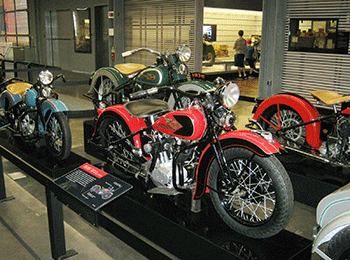From the moment I arrived in Milwaukee I could sense it. If you’ve never toured a brewery, you wouldn’t recognize it.
“It” is that subtle, sweet scent of boiling malt. For beer aficionados, the aroma teases the senses, enticing them to slowly sip a cold one on a hot summer afternoon.
Though originally settled by a French-Canadian, Milwaukee grew quickly during the 19th century due to the large influx of German immigrants. With their arrival began a long beer brewing history that can still be found on nearly every street corner.
Fueling Milwaukee’s economy for more than a century, the beer industry is woven into the fabric of city life. From the stately Pabst mansion, to the upstart, kosher-certified Lakefront Brewery, Milwaukee relishes its connection to beer. Even the classic TV show Laverne & Shirley, set in Milwaukee, had its protagonists work in the fictitious Shotz brewery. Perfectly complimenting Wisconsin’s legendary sausage and cheese production, Milwaukee’s brewing tradition ensures a delightful culinary visit.
But this city founded along the shore of Lake Michigan has much to offer even the most ardent teetotaller.
The Harley Davidson Company, perhaps the world’s most iconic motorcycle brand, began in Milwaukee in 1901. Founded with the goal of creating a motorized bicycle to rival early automobiles, Harley Davidson grew steadily into one of the world’s largest motorcycle manufacturers. The company maintains an impressive display of its vehicles at the city’s Harley Davidson Museum.
Scenically located along the shores of Lake Michigan, the Milwaukee Art Museum houses an impressive collection of pieces from around the globe. The Herzfeld Foundation, started by local Jewish philanthropists, Richard and Ethel Herzfeld, sponsored the critically acclaimed Postcards from America photographic exhibit upon its debut in Milwaukee. The remarkable travelling exhibition showcases talent from amateur local photographers in each city visited.
 Milwaukee recently revived its downtown core with its trendy Riverwalk pedestrian walkway nestled alongside the Milwaukee River. This former industrial neighbourhood includes more than five kilometres of scenic pathways lined with chic boutiques, pubs and restaurants. It was while walking along this pathway that I stumbled upon the Bronze Fonz.
Milwaukee recently revived its downtown core with its trendy Riverwalk pedestrian walkway nestled alongside the Milwaukee River. This former industrial neighbourhood includes more than five kilometres of scenic pathways lined with chic boutiques, pubs and restaurants. It was while walking along this pathway that I stumbled upon the Bronze Fonz.
This full-size statue of Happy Days character, Fonzie, was unveiled by the city in 2008 in a ceremony that included actor Henry Winkler.
The city is well known for its collection of historic ethnic neighbourhoods. The population of 600,000 includes large German and Irish communities, both of which left their impression on the local landscape.
Nineteenth-century Irish immigrants originally settled in the historic Third Ward District. This area of downtown Milwaukee, encompassing some 16 square blocks, was once known as “The Bloody Ward” due to its rampant crime and mob activities. After suffering catastrophic fires and subsequent ethnic migrations, the district has since morphed into a revitalized, gentrified area for the city’s arts community. The Milwaukee Public Market, a shopping venue focusing on locally produced foods, sits at its centre.
Milwaukee’s German community, arguably the city’s largest and most influential, was augmented substantially by the large influx of German Jews who settled in the 1850s. While most German immigrants went to work establishing the beer, sausage and cheese industries, German Jews went into business and commerce. Max Kohl, founder of the Kohl’s Department Store chain, and Bud Selig, former commissioner of Major League Baseball are but two famous Milwaukee Jewish businessmen.
Fleeing pogroms and persecution during the latter half of the 19th century, Milwaukee’s Jewish community grew quickly with the arrival of Eastern European Jews. As was the case in many cities, these new immigrants recoiled at the religious decline of their German counterparts. They quickly established their own synagogues and community institutions in the city’s north side. Congregation Beth Jehudah, founded by chassidic leader Rabbi Jacob Twerski in 1927, remains the sole remnant of this once flourishing Jewish area. Milwaukee’s most famous Jewish resident, late Israeli prime minister Golda Meir, was a member of this enclave. Though no local institution exists in her honour, the Milwaukee Jewish Museum has an extensive exhibit dedicated to her illustrious life.
Michael Stavsky acknowledges the assistance of the Greater Milwaukee Convention and Visitor’s Bureau, and Travel Wisconsin in arranging his family’s trip to Milwaukee.
